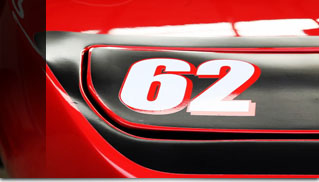 Machines come and go, usually becoming the victims of human progress..
Machines come and go, usually becoming the victims of human progress..
Murray Markwell of Southern Customs, in Pakenham Melbourne loves his American Muscle Cars, he also loves having a beer and having a chat. Murray is a walking talking encyclopedia of information about cars and car culture. Bandit Films were happy to go along for the ride and film this old NASCAR behemoth, a true testament to speed, power and money…
Director: Aaron Cuthbert
Director of Photography/ Editing/Colour Grade: Daniel De Silva
Producer/ Photography: Tom Broadhurst
Music:
Title: The Outside Man theme music
Composer: Michel Legrand
Read more and watch the video!
About the Superbird:
Developed specifically for NASCAR racing, the Superbird, a modified Road Runner/Belvedere, was Plymouth’s follow-on design to the Charger Daytona fielded by sister company Dodge in the previous season. The Charger 500 version that began the 1969 season was the first American car to be designed aerodynamically using a wind tunnel and computer analysis, and later was modified into the Daytona version with nose and tail. The Superbird’s smoothed-out body and nosecone were further refined from that of the Daytona, and the street version’s retractable headlights added nineteen inches to the Road Runner’s original length. The rear spoiler, or “wing”, was mounted on tall vertical struts that put it into less disturbed air thus increasing the efficiency of the downdraft that it placed upon the car’s rear axle. In street versions, it was designed to provide clearance for the trunklid to open freely. The rear-facing fender scoops were incorporated in an effort to ventilate trapped air from the wheel wells in order to facilitate brake cooling.
A Mopar Orange Plymouth Superbird.
In response, NASCAR’s homologation requirement demanded that vehicles to be raced must be available to the general public and sold through dealerships in specific minimum numbers. For 1970, NASCAR raised the production requirement from 500 examples to one for every two manufacturer’s dealers in the United States; in the case of Plymouth, that meant having to build 1,920 Superbirds. Due to increasing emissions regulations, combined with insurance hikes for high performance cars, 1970 was its only production year.
“Superbird” decals were placed on the outside edges of the spoiler vertical struts featuring a picture of the Road Runner cartoon character holding a racing helmet. A smaller version of the decal appears on the driver side headlight door. Superbirds had three engine options: the 426 Hemi V8 engine, the 440 Super Commando with a single 4-barrel carburetor, or the 440 Super Commando Six Barrel with three two-barrel carburetors. Only 135 models were fitted with the 426 Hemi. As the 440 was less expensive to produce, the “Street” version of the 426 Hemi engine used in competition was homologated by producing the minimum number required.
On the street, the nose cone and wing were very distinctive, but the aerodynamic improvements hardly made a difference there or on the drag strip. In fact, the 1970 Road Runner was actually quicker in the quarter mile and standard acceleration tests due to the increased weight of the Superbird’s nose and wing. Only at speeds in excess of 90 mph (140 km/h) did the modifications show any benefit.
Welcome to Murray Country from Bandit Films on Vimeo.